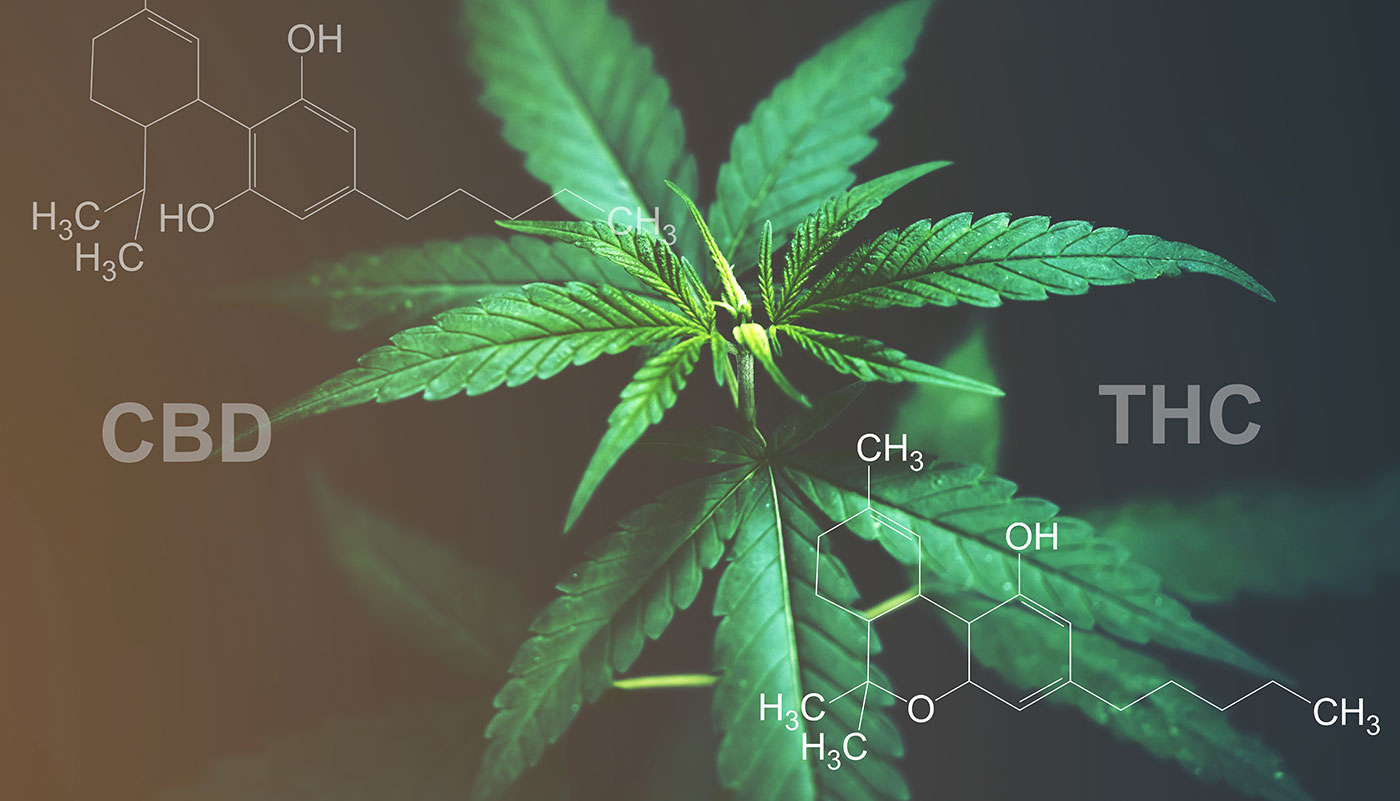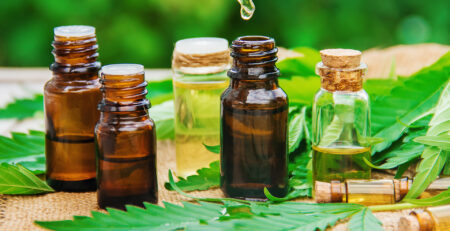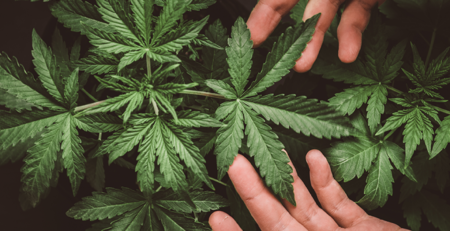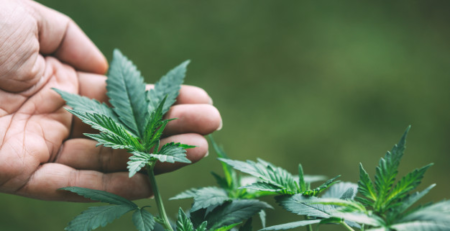What are the differences between CBD and THC?
THC and CBD are two of the most common terms regarding marijuana. They appear in any debate of anxiety and depression or any condition treated using medical marijuana. Many potential marijuana users are always looking for the best CBD oil or THC concentrate, among others. THC stands for tetrahydrocannabinol, while CBD stands for cannabidiol. These two are the best-known marijuana cannabinoids. In this article we will look within depth at the two cannabinoids. So that you understand the differences between CBD and THC.
What are cannabinoids?
Cannabinoids are naturally occurring compounds which interact to certain physiological effects with receptors found throughout the body. More than 100 different cannabinoids have been identified in the cannabis plant by scientists. However, the ones you’ll hear most about are delta-9-tetrahydrocannabinol (THC) and cannabidiol (CBD).
Endocannabinoids – https://www.uclahealth.org/cannabis/human-endocannabinoid-system
Human beings, together with all vertebrates such as dogs, cats, fish, and birds, generate endocannabinoids. Endocannabinoids are neurotransmitters that bind to receptors and influence pain, mood, appetite, sleep, and a range of other functions; Exogenous cannabinoids meanwhile are not formed by the body but can be identified in THC, CBD, and a number of other compounds in marijuana.
Side Effects of CBD
Side effects of CBD are rather minimal, based on current studies. There are records of drowsiness, dry mouth and low blood pressure, according to studies done by Medical Marijuana Inc. But no connections to serious side effects have been identified.
What is THC?
THC, or tetrahydrocannabinol, is a psychoactive component of marijuana, although the THC molecule is surprisingly similar to its non-psychoactive counterpart CBD. THC is what gets you high, and for that reason is somewhat less accepted for medicinal use than CBD.
Still, THC brags its own beneficial uses. THC has properties that have been known to help treat pain, nausea, asthma and even anorexia nervosa. However, as a psychoactive compound, its medicinal uses are still controversial.
Side Effects of THC
As a compound in a federally illegal drug, studies on THC’s effects and benefits are fairly limited. But what research has been done has found a number of effects from THC.
In high-concentration THC, common negative side effects include reduced cognitive functions, anxiety, paranoia, dry mouth, red eyes, lethargy and increased appetite. Still, the positive effects of THC include increased relaxation, joint and headache relief, among others. It’s worth noting that the increased appetite effect is often looked at as a positive among chemotherapy patients suffering extreme loss of appetite, as well as individuals suffering from an eating disorder.
What are the medical benefits of CBD?
The list of conditions CBD may help with is ever-expanding. More research is needed to better understand the efficacy and range of CBD’s benefits, but it’s popularly used to manage the following symptoms and conditions:
- Epilepsy and seizure disorders
- Pain and inflammation
- PTSD and anxiety
- Crohn’s disease
- Multiple sclerosis
- Opioid withdrawal
Though clinical and anecdotal evidence suggests CBD’s benefits in managing different conditions, it became most famous for treating a rare and debilitating form of pediatric epilepsy. Dravet’s Syndrome is notoriously resistant to current approved treatment methods. Sufferers are plagued by seizures, often up to hundreds a day, that worsen as they age and can be life-threatening. Currently, treatment methods include having the child wear an eyepatch, specialized diets, and brain surgery, but all have mixed success rates.
One of the earliest success stories involves a young girl named Charlotte who was given an ingestible oil derived from Charlotte’s Web, a CBD strain that was specifically developed to provide her with all the benefits of the drug without the high. In less than two years, Charlotte went from a monthly seizure count of 1,200 to about three. Other success stories followed and more parents have begun to speak out, particularly parents who are desperate for access to this life-saving treatment and have leaned on the promising treatment of high-CBD strains to help alleviate symptoms.
Although THC is best known for its mind-altering euphoria, it too has important medical benefits. There’s some overlap in what CBD and THC can treat, but THC is particularly effective in relieving nausea, appetite loss, insomnia, among other symptoms. Many patients find that a balance of CBD and THC offers the best symptom relief as the two work together synergistically.
Differences in the Legal Status Between CBD and THC
The legality of cannabinoid products in the United States is dependent on their THC concentration and source, marijuana or hemp. How do THC and CBD differ in legality?
Marijuana and THC are both specifically listed in the U.S. Controlled Substances Act and, therefore, prohibited under federal law. Thirty-three U.S. states and Washington D.C. have passed their own cannabis policies permitting the use of medical marijuana with high levels of tetrahydrocannabinol, provided it’s recommended by a licensed physician. Eleven of those states and Washington D.C. have gone a step further and legalized the recreational use of marijuana and THC.
CBD is legally available in the United States, but it must be derived from high-CBD, low-THC hemp. CBD itself is not listed under the Controlled Substances Act, so it’s legal at the federal level, provided it’s not extracted from marijuana.
If derived from marijuana, CBD cannabis is illegal unless obtained through a state-regulated medical marijuana program or in a state that permits recreational marijuana use. CBD products derived from hemp are legal to buy and sell in the U.S.
what are the strongest marijuana strains in the world?
According to the Seattle Times, only about 2.5 percent of marijuana in Washington tests above 28 percent THC. All five of the top performers listed here from the past two years worth of worldwide Cannabis Cups scored higher than 31 percent. This makes them the cream of the crop. These strains pull from some of the most well known cannabis strains: like OG Kush, Northern Lights, Headband, Durban Poison, and Girl Scout Cookies.
GODFATHER OG
Godfather OG takes the top of our list for strongest THC strains with an incredible 34.04% THC. OG strains have long been prized for their unbelievably relaxing effects, and Godfather OG is no different. Although it has a dubious lineage, with different online sources listing various genetics, most acknowledge Godfather OG as a combination of Granddaddy Purp (GDP) and OG Kush.
There is a spiciness in Godfather OG’s scent that should be familiar to OG Kush connoisseurs that is coupled here with some subtle grape notes from the GDP. One of the heavier OG strains available, Godfather OG is best used after physical activities and is often recommended for users hoping to get a good night’s sleep.
SUPER GLUE
Named for its ability to glue you to your seat, Super Glue is a cross between strains like Afghani and Northern Lights. Afghani is a heavy bodied pure indica landrace (domesticated variety) that is from the Hindu Kush mountain region of Afghanistan. Northern Lights itself is a cross of the same Afghani and a Thai sativa landrace.
This indica dominant strain is a knockout. Super Glue’s pale, frosty buds have flavor profiles that vary from pine and pungent earth to a sour, acidic citrus. Super Glue brings calming relaxation to the mind and body. Watch out for “couchlock” when consumed in high amounts, which can keep you from being productive. Typically found with THC percentages in the low 20s, this hitter reached 32.14% at the 2016 Southern California Cannabis Cup.
CHEMDOG
ChemDog’s ultimate genetics are a mystery, with many breeders claiming to have had a hand in its creation. Many believe its heritage originates in Eastern Asia (Thai and Nepalese) landraces. ChemDog is a sativa dominant hybrid with THC levels regularly reaching past 20% or higher. At the Colorado Cannabis Cup, this strain came in at 32.12% THC.
Buds of ChemDog are usually sticky with resin. ChemDog’s name comes from the strain’s strong, diesel fuel like scent and similarly sharply astringent flavor.
Also known as ChemDawg, this old school strain is rumored to provide parent genetics to a number of respected strains, including OG Kush and Sour Diesel. The most sought after descendent of this strain is ChemDawg 91, thought to be closest to the original cut. The relaxed, mood lifting high is sure to pull you out of any funk and get you moving day and night.
Highest CBD Strains
Once ignored by the marijuana community, CBD had been systematically bred out of the cannabis plant’s cannabinoid profile by growers favoring strong, high THC strains that sold better to recreational users. High CBD strains like those listed below are now gaining popularity. They are known for their balanced highs, less sharp cerebral effects, and strong physical benefits.
Once a rarity on dispensary shelves, CBD dominant strains are now earning their place alongside high THC strains at events like the Cannabis Cup. The strains on this list have genetics from the best known CBD strains available, including Harlequin, AC/DC, and Sour Tsunami.
While it is often accepted that a 1:1 ratio of CBD to THC is the most comfortable high for most users, higher ratios, reaching up to 24:1, provide wellness effects with minimal, if any, intoxicating effects.
Here are the strongest marijuana strains by CBD concentration.
CANNATONIC
A popular medical marijuana strain, Cannatonic is a cross between MK Ultra and G13 Haze. Cannatonic was developed to maximize each strain’s indica characteristics. Most phenotypes of Cannatonic present with a slight earthy flavor, accented by sweet pine and citrus.
Cannatonic typically tests at about 12% CBD with a 1:1 or 2:1 CBD to THC ratio. However, this potent marijuana strain scored 22.77% CBD when tested for the 2016 Southern California Cannabis Cup.
The effects of Cannatonic can be powerful, but short lived. The effect is mostly a clear-headed high. It is good for daytime relief. The focus here is on relaxation and wellbeing. Cannatonic is a feel good strain that has gained popularity in the cannabis community worldwide. This is despite – or perhaps because of – its high CBD content.
RINGO’S GIFT
This CBD rich strain was named after the late Lawrence Ringo. Ringo was a cannabis activist and pioneer of CBD dominant strains. Ringo’s Gift crosses Harle-Tsu, a high CBD hybrid cross between Harlequin and Sour Tsunami, and ACDC, a Cannatonic phenotype. Ringo’s Gift reached 20.23% CBD when tested in Southern California.
Dominant flavors are citrus and pine, with a noticeable earthiness that sits deep in the nose when inhaled. Phenotypes of Ringo’s Gift vary wildly in CBD to THC ratios from 1:1 to 24:1. With such a range in CBD ratio, effects can be hard to nail down. Most harvests will provide a mellow mix of cerebral stimulation and soothing, full body relaxation without the “couch lock” effect tied to some cannabis strains.
CALI CURE
Bred by Hermosa Seeds, Cali Cure has mostly Critical Cure lineage with influence from OG Kush and Girl Scout Cookies. Strongly indica dominant, Cali Cure won Best CBD Flower at the 2016 Southern California Cannabis Cup and came in 2nd in potency with 19.92% CBD.
Cali Cure typically presents a 2:1 CBD to THC ratio for soothing body effects that are perfect for immediately after vigorous activity. Expect a fragrant sweet floral scent and flavor for a delightful smoking experience.




